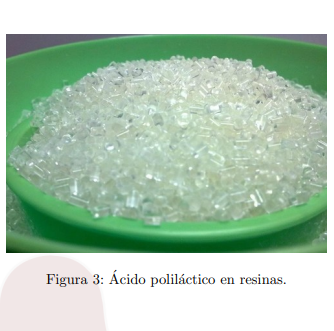Nota Técnica: Tecnologías para la obtención de bioplásticos a partir de diferentes materias primas Recibido: /octubre 2019; Aceptado: /diciembre 2019
Contenido principal del artículo
Resumen
Los bioplásticos son materiales que poseen las propiedades funcionales de los plásticos, en cuanto a dureza, resistencia, ligereza, durabilidad, capacidad de ser aislantes térmicos y eléctricos, entre otros. Son producidos, a partir, de fuentes naturales y/o renovables e incluso pueden ser biodegradados y/o compostados. Surgen principalmente como una necesidad, dada la resistencia a la degradación natural que tienen los plásticos provenientes de fuentes petroquímicas, ocasionando una creciente contaminación ambiental, que afecta tanto los ecosistemas terrestres como marítimos. En este sentido, el objetivo de este estudio es identificar y describir los procesos de producción de bioplásticos a partir de diferentes materias primas, realizando un análisis bibliométrico y patentométrico de artículos científicos y patentes obtenidas en las plataformas PatentInspiration, The Lens, ScienceDirect y PubAg. Los resultados obtenidos permitieron identificar que las tendencias tecnológicas no se centran en la obtención de biopolímeros, sino en la manufactura de los bioplásticos a partir de los biopolímeros sintetizados. De acuerdo a lo observado, los países que se encuentran en la vanguardia de registro y solicitudes de patentes para el lapso de estudio (2009 - junio 2019) son las naciones emergentes, China e India. Este comportamiento no se mantiene para las publicaciones científicas.
Descargas
Detalles del artículo
Referencias
R. C. Thompson, S. H. Swan, C. J. Moore, and F. S. Vom Saal. Our Plastic Age. Philosophical Transactions of the Royal Society B: Biological Sciences, 364(1526):1973–1976, 2009.
Plastics Europe, Brussels. Plastics – The Fact 2018, 2019.
J. Hopewell, R. Dvorak, and E. Kosior. Plastics Recycling: Challenges and Opportunities. Philosophical Transactions of the Royal Society B: Biological Sciences, 364(1526):2115–2126, 2009.
G.-Q. Chen and M. K. Patel. Plastics Derived from Biological Sources: Present and Future: A Technical and Environmental Review. Chemical Reviews, 112(4):2082–2099, 2013.
I. E. Napper and R. C. Thompson. Environmental Deterioration of Biodegradable, Oxo-Biodegradable, Compostable, and Conventional Plastic Carrier Bags in the Sea, Soil, and Open Air Over a 3-year period. Environmental Science and Technology, 53(9):4775–4783, 2019.
J.A. Schrader, K.G. McCabe, G. Srinivasan, K. Haubrich, D. Grewell, S. Madbouly, and W.R. Graves. Development and Evaluation of Bioplastic Containers for Sustainable Greenhouse and Nursery Production. Acta Horticulturae, 1104:79–88, 2015.
A. Iles and A. N. Martin. Expanding Bioplastics Production: Sustainable Business Innovation in the Chemical Industry. Journal of Cleaner Production, 45:38–49, 2013.
K. Amulya, M. V. Reddy, M. V. Rohit, and S. V. Mohan. Wastewater as Renewable Feedstock for Bioplastics Production: Understanding the Role of Reactor Microenvironment and System pH. Journal of Cleaner Production, 112:4618–4627, 2016.
C. Kasemsap and C. Wantawin. Batch Production of Polyhydroxyalkanoate by Low-Polyphosphate-Content Activated Sludge at Varying pH. Bioresource Technology, 98(5):1020–1027, 2007.
A. A. Khardenavis, A. N. Vaidya, M. S. Kumar, and T. Chakrabarti. Utilization of Molasses Spentwash for Production of Bioplastics by Waste Activated Sludge. Waste Management, 29(9):2558–2565, 2009.
A. D. Tripathi, A. Yadav, A. Jha, and S. K. Srivastava. Utilizing of Sugar Refinery Waste (cane molasses) for Production of Bio–plastic Under Submerged Fermentation Process. Journal of Polymers and the Environment, 20(2):446–453, 2012.
H. Al-Battashi, N. Annamalai, S. Al-Kindi, A. Sadasivan, S. Al-Bahry, J. Prakash, and N. Sivakumar. Production of Bioplastic (Poly-3-Hydroxybutyrate) Using Waste Paper as a feedstock: Optimization of Enzymatic Hydrolysis and Fermentation Employing Burkholderia Sacchari. Journal of Cleaner Production, 2014:236–247, 2019.
I. Fernández, C. Del Cerro, J. L. García, and M. Prieto. WO2013072541A1. System for Improving the Production of Polyhydroxyalkanoates (Bioplastic) by Fermentation from Glycerol Using a Genetically Modified Strain of Pseudomonas Putida. Patente, 2013.
C. Miller, A. Rahman, R. Sims, A. Sathish, and A. Renil. US20130344550A1, Methods of Bioplastic Production. Patente, 2013.
W. Zou, X. Liu, L. Yu, D. Qiao, L. Chen, Liu H, and N. Zhang. Synthesis and Characterization of Biodegradable Starch-Polyacrylamide Graft Copolymers Using Starches with Different Microstructures. Journal of Polymers and the Environment, 21(2):352–365, 2013.
A. R. Ceron. The Hydrophilicity Problem of Starch Based Plastic Materials. Biotecnología en el Sector Agropecuario y Agroindustrial,11(2):41–48, 2013.
R. P. H. Brandelero, M. V. E. Grossmann, and F. Yamashita. Effect of the Method of Production of the Blends on Mechanical and Structural Properties of Biodegradable starch Films Produced by Blown Extrusion. Carbohydrate Polymers, 86(3):1344–1350, 2011.
B. Priya, V. K. Gupta, D. Pathania, and A. S. Singha. Synthesis, Characterization and Anti bacterial Activity of Biodegradable Starch/Pva Composite Films Reinforced with Cellulosic Fibre. Carbohydrate Polymers, 109:171–179, 2014.
M. Haiqing, L. Gang, and H. Lin. CN106916372A. Starch-Based Degradable Bioplastic and Preparation Method thereof. Patente, 2017.
L. Ting, D. Weifu, and H. Qiongén. CN109280130A. A Kind of Starch Graft Copolymers of fully Biodegradable and Preparation Method Thereof. Patente, 2019.
S. Kasirajan, D. Umapathy, C. Chandrasekar,V. Aafrin, M. Jenitapeter, L. Udhyasooriyan, A. Saravana, B. Packirisamy, and S. Muthusamy. Preparation of Poly(Lactic Acid) from Prosopis Juliflora and Incorporation of Chitosan for Packaging Applications. Journal of Bioscience and Bioengineering, 125(3):323–331, 2019.
F. Omoto and T. Katsuhisa. WO2010055874A1. Method for Producing Polylactic Acid, Apparatus for Producing Polylactic Acid, Method for Producing Biodegradable Plastic and Apparatus for Producing Biodegradable Plastic. Patente, 2010.
C. Ming, C. Minxi, and H. Liugen. CN106221157A. Biodegradable Polylactic Acid Film and Preparation Method Thereof. Patente, 2016.
Z. Huiliang, Y. Jia, P. Hongwei, Y. Huili, and Z. Guibao. CN108822514A. Completely-Biodegradable Polylactic Acid-Based Blow Molding thin Film and Preparation Method Thereof. Patente, 2018.
Z. Jing, X. Peilong, and S. Qi. CN106118076A. Preparation Method of Cow-Hair-Based Bioplastic. Patente, 2016.
Z. Qing, H. Shiqun, C. Yajun, and W. Tao. CN107057247A. Full-Degradable Cyanobacteria-Based Bioplastic and Preparation Method Thereof. Patente, 2017.
C. Qing and J. Zeng. CN109370183A. Bioplastic Special for Seawater Degradation and Preparation Method Thereof. Patente, 2019.
S. Jiajia, L. Cuiqin, and H. Chuqio. CN109228085A. Novel Bioplastic and Preparation Method Thereof. Patente, 2019.












